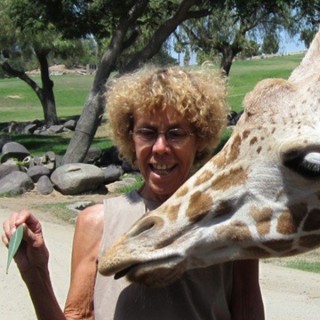
I am possibly the luckiest high school marine biology teacher on the planet. Here I am headed to the Sirena Deep with some of the most brilliant deep-sea scholars in the world.

If you have not read the Team Bios, do it soon. This place reads like a Who’s Who in deep sea exploration. Dr. Jeff Drazen, the chief scientist of this expedition, is an authority on deep-sea food webs. Dr. Patty Fryer, co-chief scientist, is known around the world for her expertise on the geology of the Mariana Islands including the Trench and the Mariana Ridge. Dr. Clifton Nunnally creates scientific instruments capable of conducting experiments at the extreme pressures of deep-sea trenches. He will be looking at the benthic (deep-sea) communities, focusing on life in the sediments. Dr. Paul Yancey is an expert on adaptations to pressure in deep-sea pelagic fish as well as other organisms, and will be continuing his research on this voyage. Dr. Stuart Piertney studies evolutionary relationships among deep-sea amphipods (marine crustaceans), their dispersal, and adaptations making it possible to survive at extreme depths. Dr. Jill Bourque will be looking at both the macrofauna (small marine animals no bigger than a pencil eraser) and meiofauna benthic communities (even smaller microcellular organisms) of the Trench. Dr. Alan Jamieson is an expert in lander design and deep-sea photography and will be documenting life in the harsh environments in the deep. Dr. Timothy Shank of Woods Hole Oceanographic Institution, an expert on the ecological and evolutionary processes occurring in deep-sea benthic communities, will also assist the entire team via the internet. Additionally, we have a super team of graduate and undergraduate students who will, without a doubt, become the next Who’s Who of deep-sea studies. You really must read all their bios to get an appreciation for this crew!
Test before Trial

Dr. Drazen gave us an introduction to the incredible biology of the deep sea on day one of this expedition and on day two, Dr. Fryer explained the complexities of the geology of the area. Both the science team and the Falkor crew spent the inital days preparing and testing equipment for the expedition. We anchored for a day in Apra Harbor, Guam to do shallow-water deployments of the rock grabber and the core respirometer (more on this equipment in future blogs). It was a very long and successful day.
Going Deeper

This morning (day three) we set sail to the Sirena Deep, our targeted spot in the Mariana Trench. We are beginning our explorations on the non-subducting Mariana Microplate at a depth of about 5000 meters (three miles). We deployed the core respirometer, the fish trap, two camera systems (the abyssal lander and the hadal lander), and the rock grabber. The core respirometer will stay on the sea floor for two days as it measures oxygen consumption in cores of sediment. While waiting for the respirometer, the other landers will surface and be redeployed. The fish trap is baited with mackerel on the inside and has hooks baited with squid on the outside. It is much larger than you would expect. The two camera systems also use fish as bait to attract organisms. The hadal lander has forward facing cameras while the abyssal lander’s camera faces the bottom. The hadal lander also has baited traps to catch amphipods. The rock grabber has two sets of jaws that grab sand, sediment or rock when it hits bottom.

Deployment is fun, but the real excitement comes when the landers return to the surface. We will continue with deployments going deeper and deeper until we reach the bottom of the Sirena Deep. We will then head up the subducting side of the Trench on the Pacific Plate, continuing to deploy the landers. Deep-sea studies are challenging, but the rewards are magnificent.

